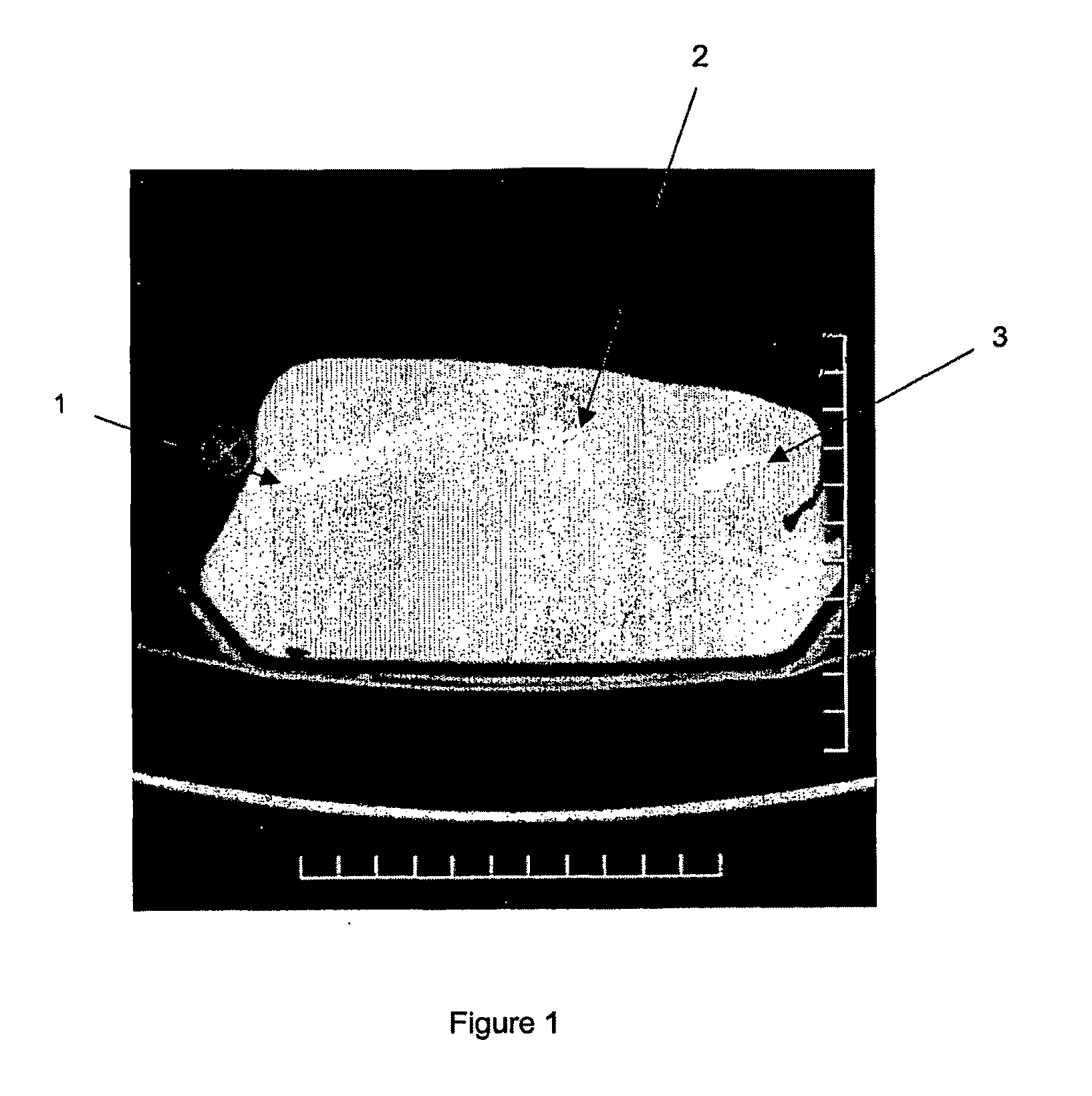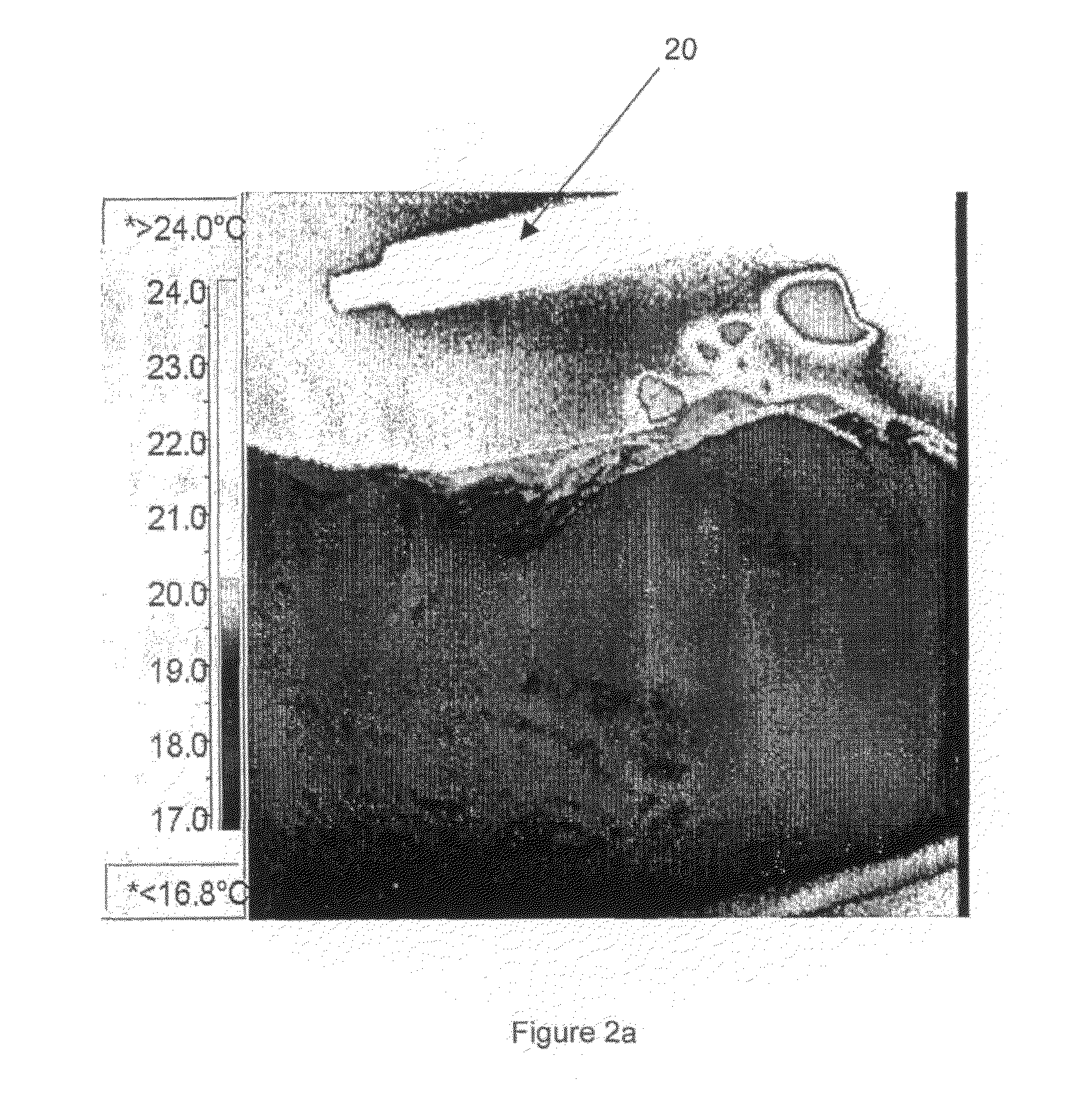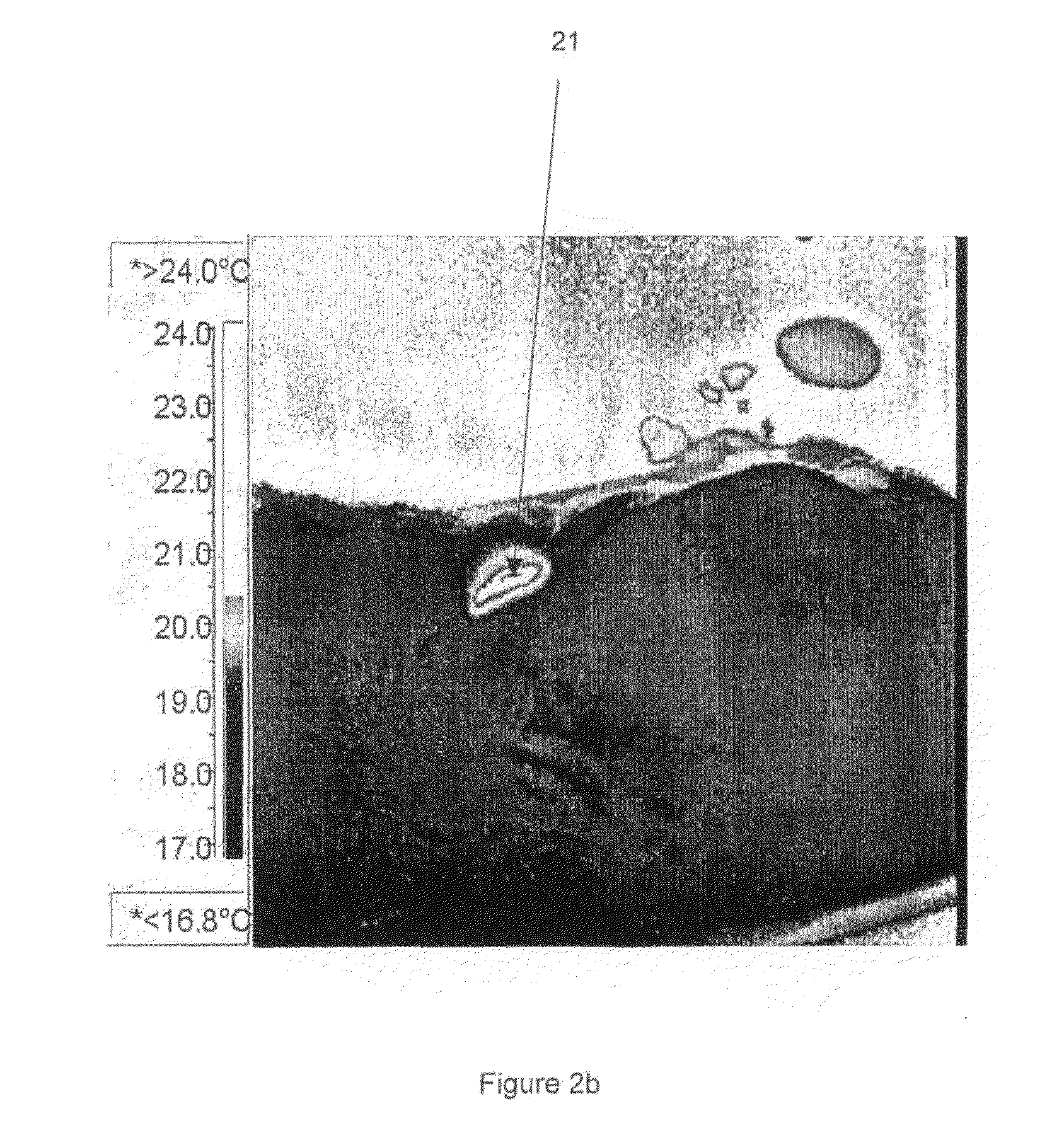Imaging Agents
- Summary
- Abstract
- Description
- Claims
- Application Information
AI Technical Summary
Benefits of technology
Problems solved by technology
Method used
Image
Examples
example 1
[0234]An electronic grade single crystal silicon wafer of purity 99.99999%, 5-15 mΩ cm resistivity and 150 mm diameter is anodised at 30 mA / cm2 for 90 minutes. A much higher current density is then applied for a few seconds to create an underlying thin very high porosity layer that will facilitate removal of the thick porous silicon layer from the non-porous part of the wafer. Upon immersion of the anodised wafer in an alcohol rinse bath, the fully intact membrane is released. This generates a 67-75 vol % porosity, 145 μm thick mesoporous membrane. The membrane is then crushed into mm size granules, and jet milled and classified. This generates a porous silicon particulate product comprising electronic grade silicon of purity 99.999% having a broad distribution of particle size between 25 and 125 μm diameter. It is then treated in aqueous HF solution for ten minutes, washed in deionised water for ten minutes, before being air dried on filter paper for ten minutes, in order to remove...
example 2
[0235]A microparticle contrast agent suitable for use in the present invention is prepared as follows. Electronic grade polycrystalline silicon powder of purity 99.999% is jet milled and classified into a tight size distribution with a mean diameter of 1 μm, a d50 of 3 μm and a d90 of 5 μm. 50 g of the classified powder is subjected to a 36% HCl acid wash and water rinse. The dried batch is then stain etched to a porosity in the range 40-80 vol % using HF / Nitric acid solutions under temperature regulation. On completion, the reaction is quenched by addition of cold water, the slurry stirred for 2 minutes and the product isolated by filtration. Water rinsing is followed by acetone and ethanol rinsing. The porous particles are suspended in a suitable formulation that after sterilisation is ready for intravenous injection.
example 3
[0236]A range of samples were prepared for testing with ultrasound. These were as follows:
(a) Bulk silicon powder (Metallurgical Grade—MGSi);
(b) A powder comprising silicon and iron (FeSi);
(c) A multi-layer porous silicon powder (MpSi) produced from a membrane (200 repeats) with the powder being hand-milled from 5 to 10 minutes;
(d) High porosity porous silicon powder (HpSi). This sample was produced by anodising a p+ wafer in a standard electrolyte. The powder was produced when the porous silicon self-detached itself from the wafer during the drying process. It was milled by hand and the porosity was estimated to be greater than 85%.
[0237]Ultrasound measurements were taken using an ESAOTE MEGAS ultrasound machine using a standard linear probe at a frequency of 7.5 MHz, and at a constant depth of 5 cm (2.5 cm focal point) and a power of 75%.
[0238]Each of the samples was injected in the form of a suspension into a poultry muscle. These were prepared by adding each of the silicon sampl...
PUM
 Login to View More
Login to View More Abstract
Description
Claims
Application Information
 Login to View More
Login to View More - R&D
- Intellectual Property
- Life Sciences
- Materials
- Tech Scout
- Unparalleled Data Quality
- Higher Quality Content
- 60% Fewer Hallucinations
Browse by: Latest US Patents, China's latest patents, Technical Efficacy Thesaurus, Application Domain, Technology Topic, Popular Technical Reports.
© 2025 PatSnap. All rights reserved.Legal|Privacy policy|Modern Slavery Act Transparency Statement|Sitemap|About US| Contact US: help@patsnap.com



